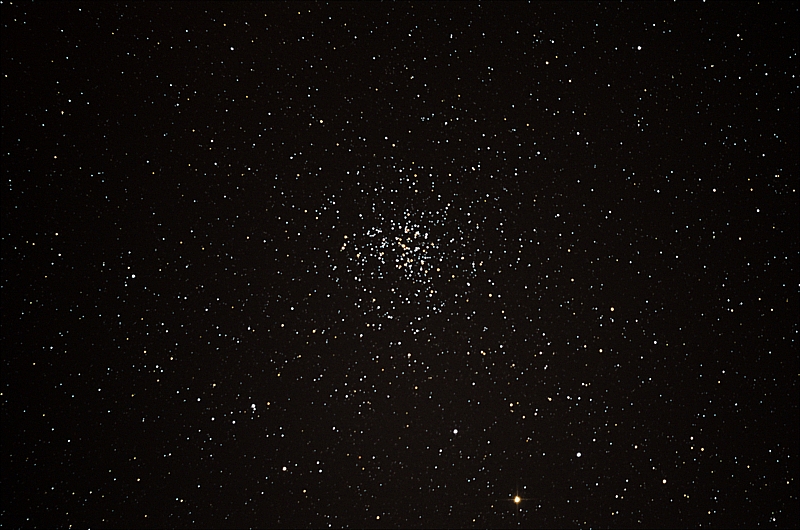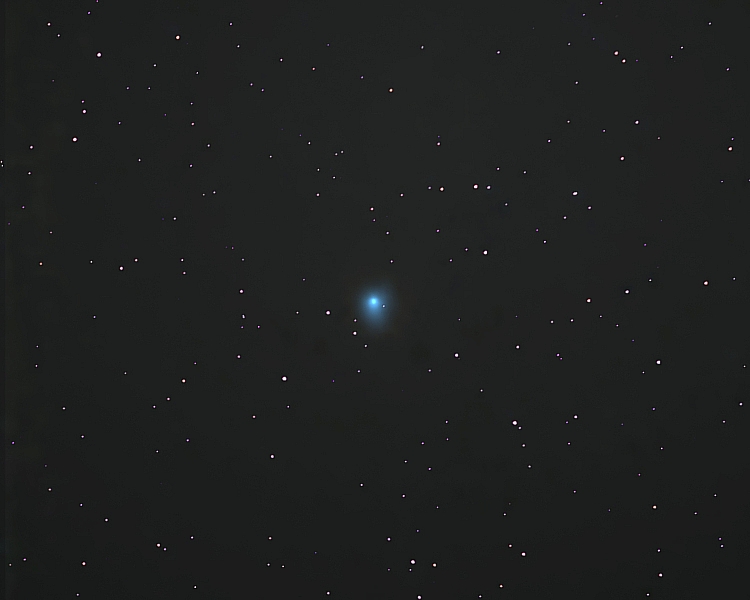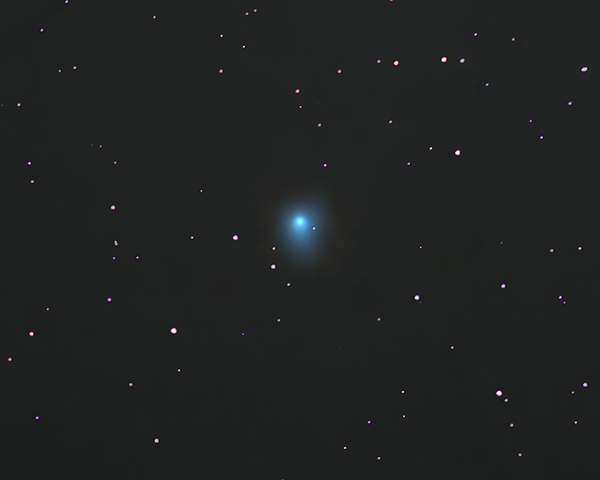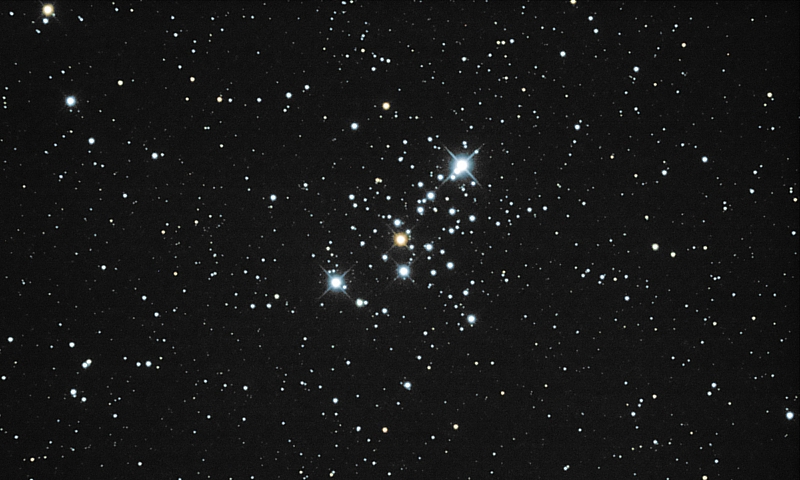It was generally nice and clear here on Wednesday evening so I got set up pretty sharpish after our weekly evening shopping trip. The seeing was quite good although there was the threat of isolated showers. The aim was to get some more views of Messier objects and to image them if possible, and then to find Comet 103P/Hartley which is increasing in brightness for the next few weeks, and which is currently above the horizon all night long.
Despite having to shut the roof a couple of times due to spitting rain, after a few hours I'd looked at a fair range of Messiers (M31, M32, M34, M35, M36, M37, M38, M45 and M110) with the 8" scope and had acquired images of the M37 and M38 with the D50. The resultant (clickable) images are as follows:

M37 (aka NGC 2099), an open cluster in the constellation Auriga.
Subs: 8 light @ 200s, darks, no flats, ISO200.
D50 and MPCC on the C8N, guided with PHD.

M38 (aka NGC 1912), an open cluster in the constellation Auriga.
Subs: 11 light @ 200s, darks, no flats, ISO200.
D50 and MPCC on the C8N, guided with PHD.
Then it was time to have a look-see at the comet. It was just a faint smudge visible through the binoculars and through the scope, but the D50 and scope combo picked it up quite well with 200s exposures. I stacked 10 frames and, after a lot of post-processing, ended up with this pic:

103P/Hartley, currently in the constellation Andromeda.
Subs: 10 light @ 200s, darks, no flats, ISO200.
D50 and MPCC on the C8N, guided with PHD.

As previous but cropped and enlarged a bit.
The comet's poorly-defined and quite dim at the moment, but it should develop a better tail and become much brighter in the coming weeks - it's closest to Earth on 20th October and closest to the Sun on 28th October, and is predicted to reach naked-eye visibility around those dates. If you want to know where and when to stare, have a look at http://www.calsky.com/cs.cgi/Comets/1



















